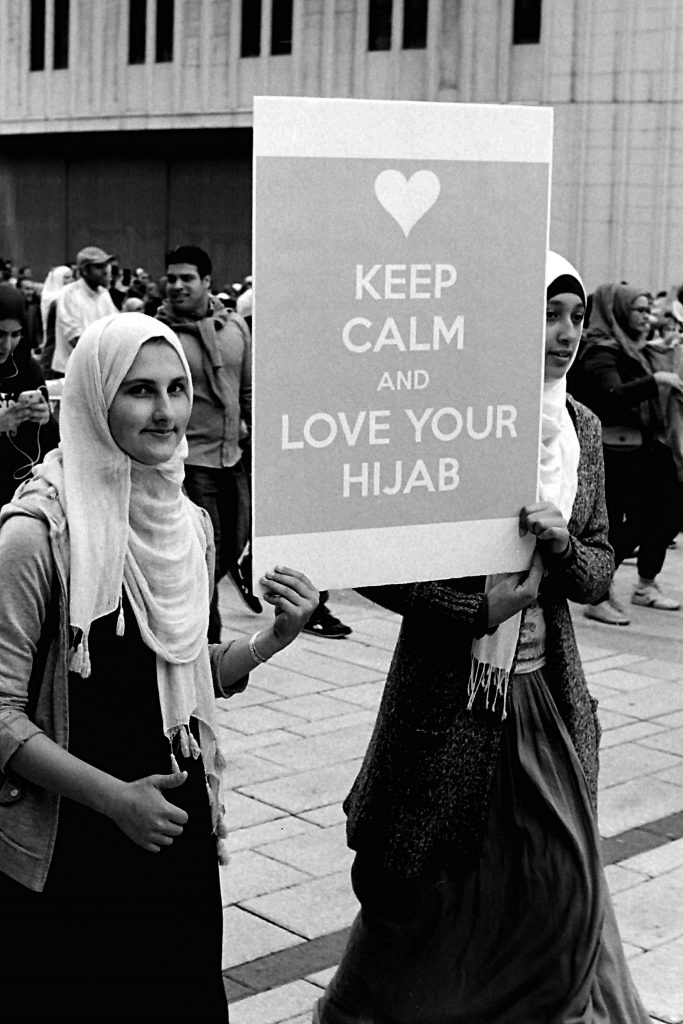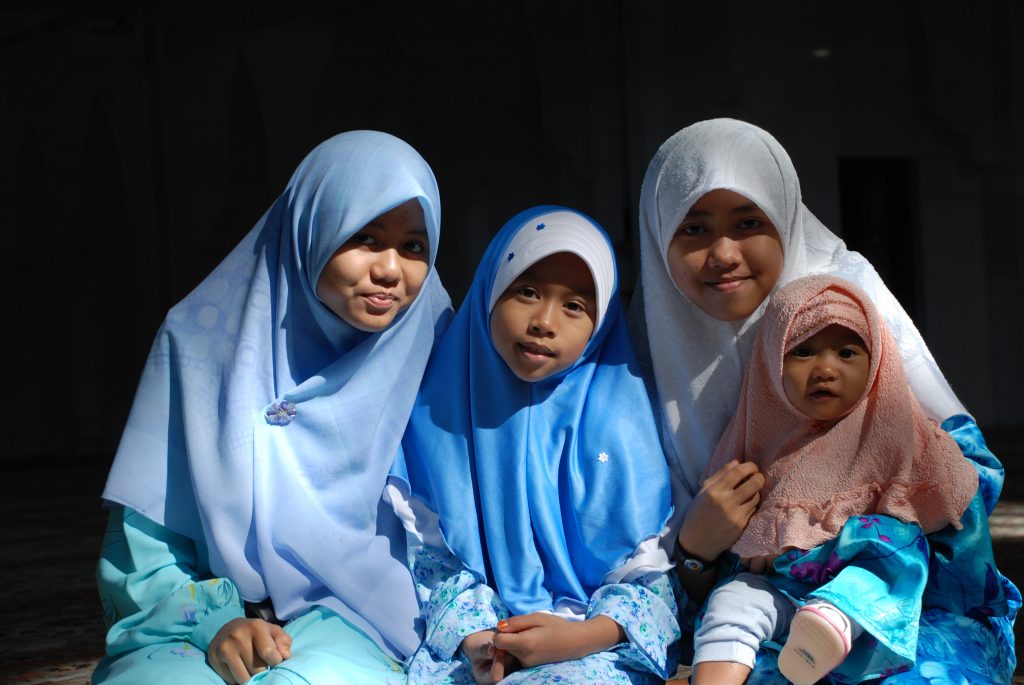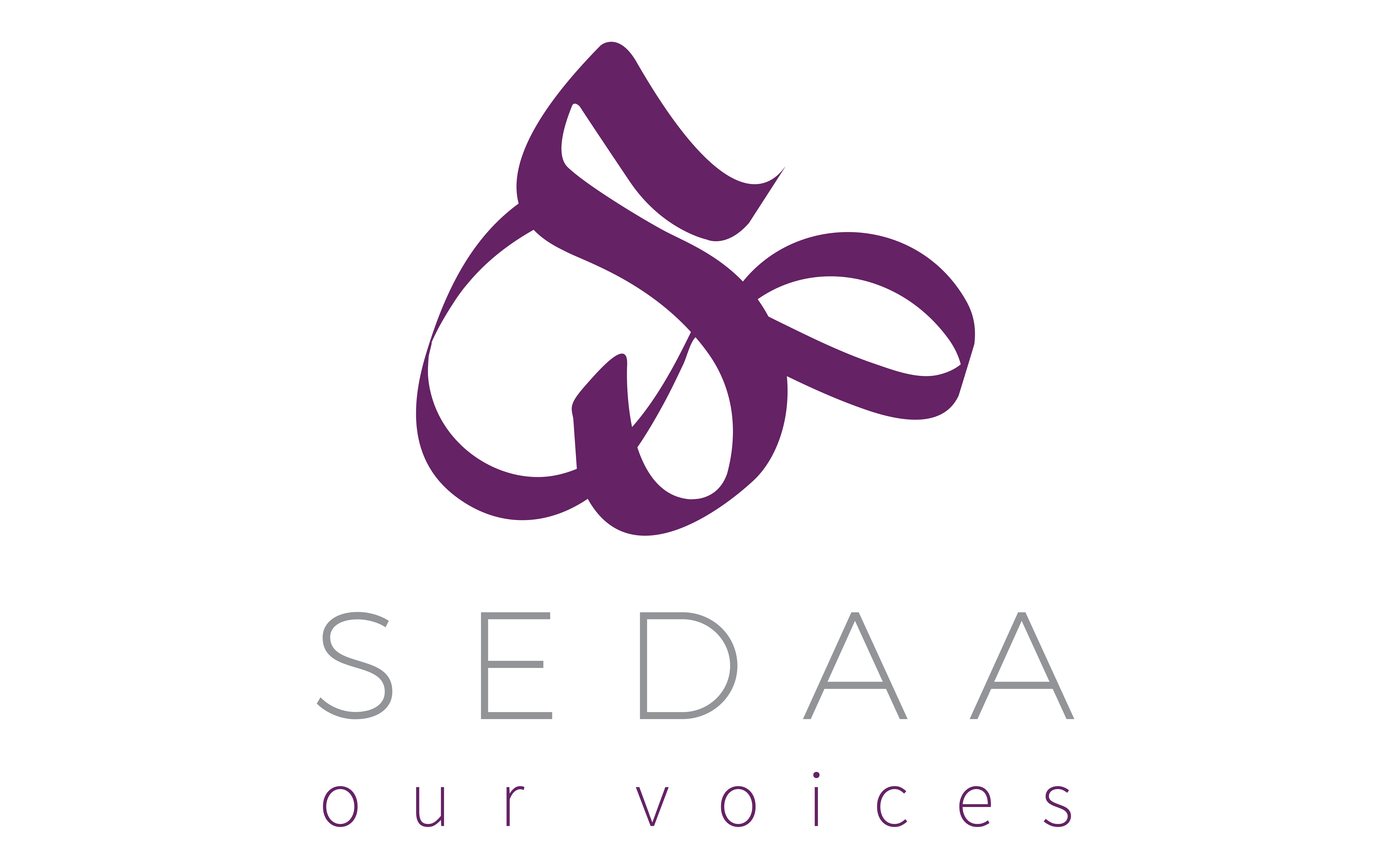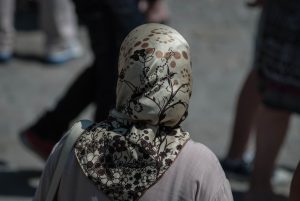By Aisha Ali-Khan
Last week, a Sunday Times investigation found that 1 in 5 primary schools now listed the ‘hijab’ as a official school uniform policy, even though young girls under the age of puberty are actually exempt from wearing it under accepted Islamic rulings. Campaigners such as Amina Lone, Gina Khan and Shaista Gohir have already brought a lot of attention to this very polemic issue. I hope to outline my own position and help put my previous comments into context with this blog. Feel free to leave comments below.
Do you want to ban the hijab?
No, absolutely not. I believe that everyone should wear what they want to whether that is a burka or a bikini, as long as they are exercising free choice. Over the past decade or so, the hijab is seen more and more being as a symbol by both extremes of the debate on Islamic dress for women- by groups such as ISIS who force Yazidi women and girls into wearing the ‘burka’ and on the other side, as a symbol of oppression by feminists and women who champion women’s rights, who want to see an outright ban.
It is very difficult to enter this debate because we can often end up in much polarised discussions and positions. ‘Do we ban the hijab?’ ‘Do we ban it for some and not others?’ ‘Do we allow anyone and everyone to wear it, even those who are exempt?’ Or ‘should we be tackling other, more serious issues such as domestic violence, sexual abuse and forced marriages first?’
For women like myself, finding a middle ground that allows women to wear what they want to wear without judgement, even if it’s a symbol seen by some as a ‘tool of oppression’ is often tricky and fraught with contradictions.
This blog is an attempt to explain and understand some of the popular misconceptions around the hijab and perhaps towards a better, more nuanced understanding of the debate around the hijab.
So what is the hijab?
According to Wikipedia:
A hijab ‘is a veil traditionally worn by some Muslim women in the presence of adult males outside of their immediate family, which usually covers the head and chest. The word ḥijāb in the Quran refers not to women’s clothing, but rather a spatial partition or curtain. The term can refer to any head, face, or body covering worn by Muslim women that conforms to a certain standard of modesty. Hijab can also be used to refer to the seclusion of women from men in the public sphere, or it may denote a metaphysical dimension, for example referring to “the veil which separates man or the world from God”.
For the purposes of this blog, I intend to use the term hijab to refer to a triangular headscarf, generally worn by Muslim woman to cover their heads.
To truly understand the beauty of hijab you need to understand the concepts behind it. According to the early scriptures, the hijab is not just a headscarf; it is a way of thinking and expressing one’s beliefs in Islam. The hijab encourages modesty and restraint both in thought and behaviour, as well as clothing. It also encourages empathy and the control of one’s ego. Moreover, Islam actually dictates that the hijab is incumbent on males first and foremost. Often you will see a Muslim man avert his gaze. He is not being rude. Rather he is observing the hijab of the gaze i.e. not to look upon a ‘ghair’ (non-relative) woman. To observe hijab, one must recognise their own failings and strive to improve their character internally first.

Gerry Lauzon / Flickr
Another key point in this very heated debate which, regretfully, I can only touch upon briefly, is how women who don’t wear the headscarf are treated. Generally, there have been no issues at all, but some recent examples are showing quite a worrying trend. In a recent election campaign, the electorate was advised to ‘choose the better Muslim’ between two Muslim women based simply upon the fact that one wore a headscarf and the other didn’t. This needs to stop. The wearing of a headscarf is no barometer of whether the person is a good Muslim or not.
What about the hijab in primary schools?
Primary school starts at the age of 5. Girls under the age of puberty are exempt from wearing the hijab in Islam, so to have school uniform policies that allows young girls to wear the hijab doesn’t make sense. It also provides the perfect excuse for far right groups to attack the hijab and attempt to get it banned for everyone. This is what happened in France and what is happening across Europe as we speak.
I understand many young girls in Years 5 & 6 who have started their menstrual cycles, who may wish to wear it but an older child of say 10 or 11 is very different in their outlook and understanding than a child of say 4 or 5 years old. Let little girls be little girls.
I remember when I was a little girl; I only ever wore a dupatta on my head when learning to read namaz (prayers) and sabaq (Qur’an) with my mum. We wore what our parents wanted at home and stuck to the school rules when we were in school. I don’t see why it has to be any different now.
Before everyone goes off to get their pitchforks, let me explain my own family situation. My niece is 6 years old. The only time she wears the hijab is when she goes to madrassa to learn Arabic or when she sees either her grandma, her mum or me pray namaz or read the Quran. When I brought her a long robe (dress) from Morocco a few years ago she wore it every day for a week and would only take it off to have it washed.
Our children are a product of our upbringing. But that upbringing needs to be tempered with understanding and an appreciation for our religion. How many of us went to the mosques and learned how to read the Quran by rote without ever understanding what we were reading? And how many young people do we know that have little or no connection to the ‘deen’ now because they were only copying behaviour without understanding the concepts behind such actions? Why is there a generation of young people with emotional and behavioural problems, with a huge increase in mental health problems?

The young people I speak with have a real disconnect with their upbringing, their families and their spirituality. We can no longer expect our young children to follow our lead and accept what we are telling without also providing a solid framework for them to express their individuality and curiosity. In a truly digital age, where we have toddlers using iPads before they can even walk, the access to knowledge and different opinions via the internet is not empowering but rather confusing young people.
Some of the comments online have been interesting. ‘Best to get the girls wearing the hijab early so that they can get used to wearing it later on in life’ was a common theme. Islam isn’t about habit or doing something without any thought or love involved. Islam actively encourages free and critical thinking, free speech and the respecting of other people’s views.
Moreover, from my own experiences of teaching and working with young people, I have seen young men and women engage in behaviour that is contrary to Islamic practices such as drug taking, sexual activity, drinking of alcohol and so on while wearing Islamic dress or keeping an Islamic appearance. That is not to say I judge them whatsoever for their actions- is it between them and our Maker as far as I am concerned. But too many young people are leaving the faith, some because they feel they were forced to do something they didn’t want to. There needs to be a strong discussion around this topic but maybe for another post.
It is very telling when I come across comments aimed at me such as ‘c*ck sucking biatch’ ‘stupid ugly b*tch’ ‘daft b*tch’. Without exercising the incumbent Islamic principles of good akhlaq (disposition, nature, temper, ethics, morals or manners) these people demand something that isn’t even prescribed for under Islamic rulings!
Has banning the Hijab worked in France?
Whenever anyone discusses the banning of anything, there is a fine balance between respecting the human rights and wishes of the people affected, and on the other hand, promoting community cohesion while addressing the needs of the wider community.?
Last year I also campaigned against the Burkini ban in France on various media platforms. By banning the hijab, has France really satisfied their goals of tackling extremism or gender based abuse? That is open to interpretation.
My belief, that women should not be dictated to on what they should or shouldn’t wear by French or any other public policy, is grounded in the principles of free choice. Similarly, women should not be forced to cover up to satisfy the strict interpretation of men based upon their patriarchal cultural framework and little girls, absolutely not!
We do not need to look too far to see what is happening on our doorsteps. Campaign groups with a far right agenda are already circling, and looking for an excuse to start calling for a ban on many of the practices that we take for granted, such as slaughtering livestock that adheres to principles of making meat halal and the circumcision of males. Why give them any more excuses.
 Aisha Ali-Khan is a mother, carer, activist, campaigner, teacher and writer. You can follow her on Twitter and read her blog here.
Aisha Ali-Khan is a mother, carer, activist, campaigner, teacher and writer. You can follow her on Twitter and read her blog here.


Too much of a coward to post under your real name though aren’t you.As for your pathetic “whataboutery” Jewish parents who cover up kids are similarly abusive and ignorant. The main point though is there are a heck of a lot more of us Muslims (actually I am a non practicing Muslim) and our numbers are increasing so it IS sn issue. A Hijab on a 4 year old is plain wrong and abusive…a 4 year old does not have a choice…
Living in the west, the hijab has become a potent indicator of identity with many non-Muslims viewing it as a political statement. However, it is pertinent to note that the hijab is, first and foremost, an act of worship that women engage in, and an act undertaken to seek the pleasure of one’s Lord.
The definition of a hijab is fiercely contested by many Muslims, and unfortunately most of those who engage in the topic are unaware that it is very much defined by Islamic law, the Sharia, and not cultural habits or one’s idea of what modesty is, or should be.
In discussing the hijab, Islamic jurists have stipulated a number of conditions for it to be a hijab in the Islamic sense. In brief, these conditions are that one’s clothing must cover the entire body in a way that the shape of the body is not apparent and the material must not be so thin that one can see through it. Clothing should not resemble that which is specific to men nor the disbelievers. It should not be attractive to men, nor should women be perfumed in public. The main aim of hijab is to stop fitnah; females who are attractive by nature attract the gaze of males which then leads to other greater sins such as fornication and adultery. Allah commanded women neither to display their adornment nor to display any form of behaviour that might attract the attention of men.
In fact, scholars from various schools of thought prohibit women from raising their voices in public, even if it be the utterance of the talbiyah during hajj or the adhan (call to prayer) between females. The Sharia also prohibits men to visit lonely women and to stay alone with them. It also prohibited men to look at women. One of the main problems is limiting the hijab as being a manifestation of female Muslim identity. When France banned the hijab they looked at it as a religious symbol unable to understand the meaning of ibaadah (worship). However, it is unfortunate to see many Muslims treating it as merely a form of identity, and once the symbolic representation has been accomplished the necessity to perform it in a way that meets its conditions laid down by Allah is overlooked. This is one of subtly reprehensible values that many western Muslims have unknowingly adopted. We have to understand that Islamic practices including observing the hijab are actions of ibaadah. They are meant to please Allah, avoid being disobedient, and earn hasanaat in order to attain a high rank in paradise.
This is a major mistake that many Muslims fall into when undertaking many Islamic practices. Having the correct aim in wearing the hijab is the first and main step towards a solution for this problem. It should be noted that projecting concerns about this non-shar’ii form of hijab does not imply discouraging Muslim women from observing a limited form of hijab which they have chosen, but instead it serves to encourage Muslim women to progress to observe the correct method of hijab. The intention of this article is driven by the desire for improvement and progress and not to incite women to withdraw from the hijab completely.
Some Muslims posit that we should not be strict in calling for the proper observance of many Islamic practices in the west, and as such, we should encourage Muslim women to do as much as they are, without criticism, even if some do not complete such observance. Undoubtedly we agree to encouraging Muslim women to do as much as they can, but correcting wrong or incomplete Islamic practices is an obligation upon those who know.
It is indeed the case that many sisters are completely ignorant about the conditions of the legally valid hijab, and hence it is incumbent upon us to raise awareness of the legal conditions and features of a correct hijab. Knowledge is the cure for many of our mistakes. Advising sisters who undoubtedly wear the hijab out of good intentions as well as educating their parents is another way towards solving this issue. It might be a good idea to print and distribute some leaflets that describe the authentic hijab in a way that goes beyond merely a head covering.
IA
There are quite a few issues I would like to respond to here from the perspective of a non-believer! I was quite taken aback that a feminist and liberal Muslim such as yourself should talk about ‘the beauty of hijab’ and of how ‘the hijab is incumbent on males first and foremost’. As to the former claim: what is beautiful about the concept that it is incumbent upon one sex to cover their head but not the other – surely this is objectifying the one gender as an intrinsic sex object? As for the latter claim – hijab is incumbent on males first and foremost, this to me smacks of ‘fantasy hijab’ in a world where it is women’s bodies and not men’s which are policed by the state, the community and the family from puberty until the grave. And what in any case is the virtue of ‘averting the gaze? This speaks of a puritanical and anti-social mindset. It is only human and natural to admire the looks of another person – and one can do so whilst wholly respecting their dignity and integrity as an autonomous human being in society. As for your summary reply on the question of: “how women who don’t wear the headscarf are treated” – “Generally, there have been no issues at all.” Tell that to all of the muslimahs who would love to live without the hijab but feel pressured into doing so by their family and community!
Moving on to your comment that “Islam actively encourages free and critical thinking, free speech and the respecting of other people’s views”. This strikes me as a highly dubious claim. Across the world Islam is known for its stress on conformity and its suppression of critical thinking and free speech! This is not just manifest in the Islamic states – a great number of which prescribe the death penalty for apostasy – but amongst muslims in the West also, where people who repudiate Islam risk being ostracised by their own families and even fear for their lives. This is no aberration from a true Islam: you can find ample examples from the Sunnah in which the killing of apostates is sanctioned by the Prophet. Whilst the Qur’an does say ‘Unto you your religion, and unto me my religion’, it is nevertheless replete with scorn and the threat of unspeakable torture in the afterlife for those who reject its diktat. Not much encouragement for critical thinking there!
Finally, in reference to your statement – “Campaign groups with a far right agenda are already circling, and looking for an excuse to start calling for a ban on many of the practices that we take for granted, such as slaughtering livestock that adheres to principles of making meat halal and the circumcision of males” – You do not need to be a person of the far right to question why or to oppose ‘the practices that we take for granted’.
On halal: people are entitled to be opposed to non-stun slaughter on the basis that they believe that animals should be slaughtered in the most humane way that is possible according to the findings of science – not according to ancient religious texts. They maintain that religious belief should not trump the welfare of animals and this is an honourable stance. The British Veterinary Association, for example, has for this reason called for the banning of all non-stun slaughter.
On male circumcision: no one should have the right to remove healthy tissue from a child on the basis that it is their culture, religion, or tradition. The child’s right to bodily inviolability should be supreme. If on attaining adulthood, a male wishes to undergo circumcision, then that is his prerogative. Do not inflict cutting on a defenceless baby who has no say in the matter and who may grow up to repudiate and resent the excision of his foreskin.
Oh dear…..yet again the secular/moderate “muslim” dictating how other muslims must practice Islam. How very intolerant & illiberal the secular “muslims are on the issue of young muslim girls wearing the hijab. After all is it not up parents to decide how they dress their children ??? Yes of course it is……unless you happen to be muslim. I wonder if the secular “muslims” wll go after jewish parents who cover their girls with a head scarf ? Of course they wont as that would be anti-semitic of them